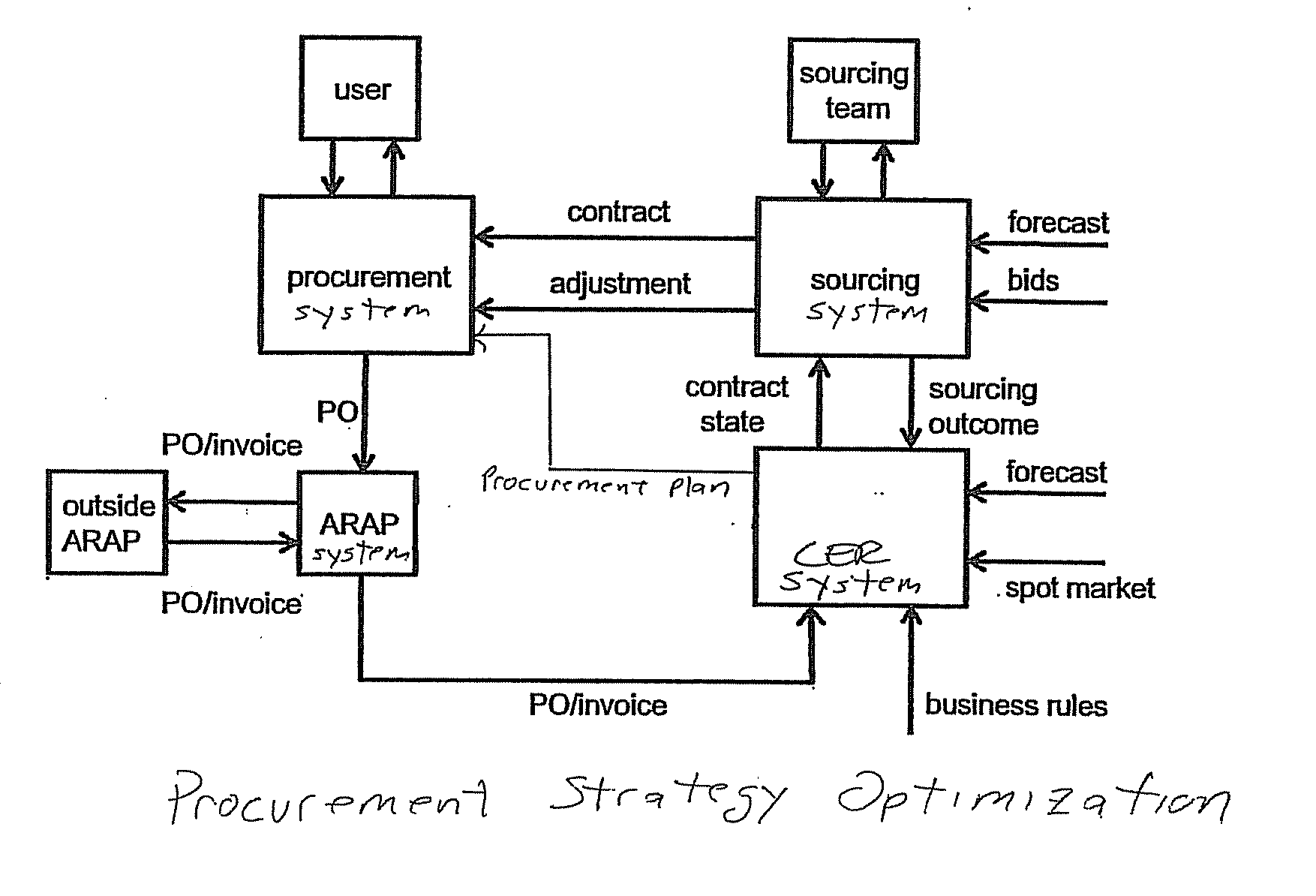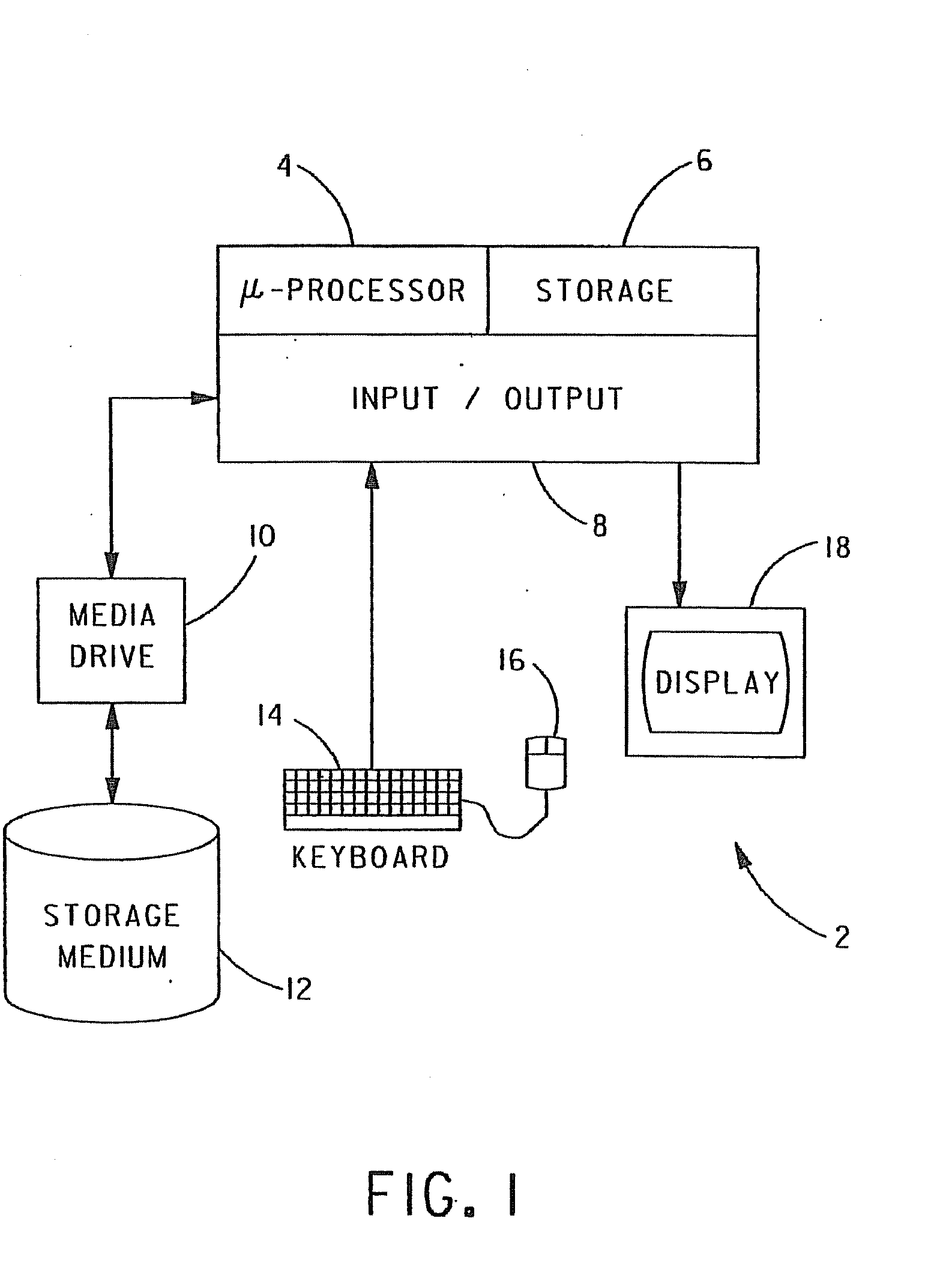System and Method for Contract Execution Against Expressive Contracts
a contract and contract technology, applied in the field of system and method for contract execution against expressive contracts, can solve the problems of direct costs to the bottom line, contract suppliers are not able to provide the contracted good or service, and prohibitive costs associated with the contracting process
- Summary
- Abstract
- Description
- Claims
- Application Information
AI Technical Summary
Benefits of technology
Problems solved by technology
Method used
Image
Examples
example 9 (
[0224within-order packages: kits): Consider a contract with a price of $100 for a package consisting of one unit of A, one unit of B, and one unit of C. Purchased separately, A, B, and C are priced at $40 per unit.
[0225]An expressive procurement system should alert a buyer that submits a request for items A and B that item C could be purchased for an additional cost of $20.
[0226]Example 10 (within-order tiered pricing): Consider a contract with a unit price of $10 per item for 1 to 100 units and $9 per item for 101+ units, where the lower price applies to every unit purchased.
[0227]An expressive procurement system should alert a buyer that submits a request for 80 units that a volume discount exists for 101 units or more. This could lead to less myopic decision making—where procurement is made in purchase orders of size at least 101 in order to leverage the discount.
[0228]Illustrating the Need for Procurement Strategy Benchmarking:
[0229]Spend-analysis systems are reporting tools aim...
example 11 (
[0230uneducated buyers): Consider again the setting of example 8. Assume that, as forecasted, 100 items A and 100 items B were bought over the contracts lifetimes. Suppose the buyers were being myopic, and spend a total of $2000 by buying all of A from supplier 1, because they ignored the recommendations of the optimal contract execution decision support tool. We can quantify the loss to due this behavior, and use this analysis to make the buyers aware of the consequences of their behavior.
[0231]Illustrating The Need for Procurement Strategy Optimization:
[0232]The third problem identified here is the need for procurement strategy optimization, wherein rather than using periodic sourcing events, continual feedback from the procurement process can be used to trigger reoptimization. For example, a decision could be made to change the current allocation of projected spend to contracts based on new market projections about demand and spot market prices. To give another example, there cou...
PUM
 Login to View More
Login to View More Abstract
Description
Claims
Application Information
 Login to View More
Login to View More - R&D
- Intellectual Property
- Life Sciences
- Materials
- Tech Scout
- Unparalleled Data Quality
- Higher Quality Content
- 60% Fewer Hallucinations
Browse by: Latest US Patents, China's latest patents, Technical Efficacy Thesaurus, Application Domain, Technology Topic, Popular Technical Reports.
© 2025 PatSnap. All rights reserved.Legal|Privacy policy|Modern Slavery Act Transparency Statement|Sitemap|About US| Contact US: help@patsnap.com



